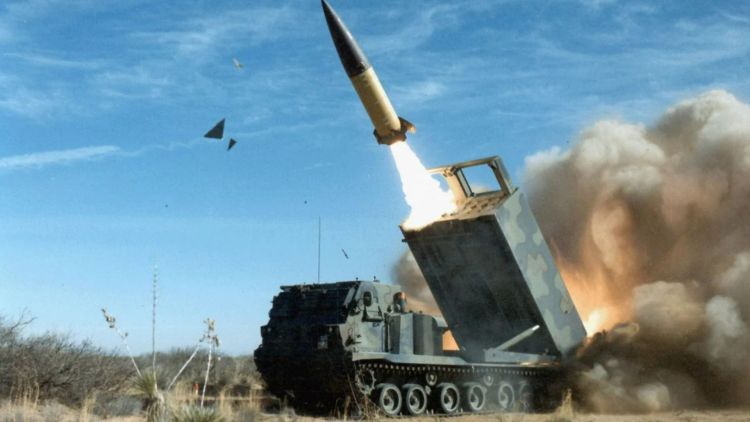The conflict in Ukraine has been grinding on for over two and a half years, and while international support has been strong, one issue has emerged as a sticking point—whether or not to allow Ukraine to use long-range Western weapons to strike deep into Russia.
Ukrainian President Volodymyr Zelenskyy has been pushing hard for months, asking his allies in the United States and the United Kingdom to lift restrictions on weapons like the American-made Army Tactical Missile System (ATACMS) and British Storm Shadows.
These powerful systems could give Ukraine a significant edge in limiting Russia’s ability to launch attacks. But despite ongoing discussions, a final decision remains elusive.
Here’s our latest take on this matter.
High-Stakes Visits, High Hopes
This week, US Secretary of State Antony Blinken and British Foreign Secretary David Lammy made a high-profile visit to Kyiv to meet with Zelenskyy.
Their visit, marked by air raid warnings, was a symbol of continued Western support, but it didn’t bring the breakthrough Ukraine had been hoping for.
While Blinken and Lammy expressed their commitment to Ukraine’s fight, the issue of long-range strikes was still up in the air.
Blinken hinted that the US was considering the option, saying, “We’re working that out right now,” when asked about allowing Ukraine to use longer-range weapons to strike Russian territory.
The conflict in Ukraine has been grinding on for over two and a half years, and while international support has been strong, one issue has emerged as a sticking point—whether or not to allow Ukraine to use long-range Western weapons to strike deep into Russia.
Ukrainian President Volodymyr Zelenskyy has been pushing hard for months, asking his allies in the United States and the United Kingdom to lift restrictions on weapons like the American-made Army Tactical Missile System (ATACMS) and British Storm Shadows.
These powerful systems could give Ukraine a significant edge in limiting Russia’s ability to launch attacks. But despite ongoing discussions, a final decision remains elusive.
Here’s our latest take on this matter.
High-Stakes Visits, High Hopes
This week, US Secretary of State Antony Blinken and British Foreign Secretary David Lammy made a high-profile visit to Kyiv to meet with Zelenskyy.
Their visit, marked by air raid warnings, was a symbol of continued Western support, but it didn’t bring the breakthrough Ukraine had been hoping for.
While Blinken and Lammy expressed their commitment to Ukraine’s fight, the issue of long-range strikes was still up in the air.
Blinken hinted that the US was considering the option, saying, “We’re working that out right now,” when asked about allowing Ukraine to use longer-range weapons to strike Russian territory.
“Together, we’re working to make sure that Ukraine can defend its territory against the ongoing aggression, that it will be able to stand strongly on its own two feet militarily, economically, democratically, and that it will remain on the path that the Ukrainian people so desire it to be on of closer integration with Europe, with transatlantic institutions,” Blinken told reporters on Wednesday, September 11.
Lammy, on the other hand, suggested that discussions could continue for several more weeks.
This is likely frustrating for Ukraine, which has made it clear that these long-range capabilities are essential for countering Russian aggression.
Zelenskyy, always the diplomat, said he’s counting on some “strong decisions” from his Western allies but acknowledged that a final call depends on the “optimism” of Ukraine’s partners.
While the meetings were described as “long and meaningful,” there’s still no firm answer on whether Kyiv will get the green light for these long-range strikes.
Why the Hesitation?
The big question is, why are the US and Britain holding back? The hesitation comes down to the fear of escalation.
Washington and London are wary of provoking Russia into a direct conflict with the West.
The Kremlin has already warned that if Ukraine is allowed to strike deep into Russian territory with Western weapons, it would consider the US and its allies to be direct participants in the war.
“That would mark (the use of Western weapons) their direct involvement in the war against the Russian Federation, and we reserve the right to act the same way,” Russian President Vladimir Putin told reporters in a rare international press briefing last June.
That’s a pretty heavy threat, especially when you’re dealing with a nuclear-armed country like Russia.
Blinken and Lammy’s cautious approach reflects the delicate balance Western leaders are trying to maintain.
They want to help Ukraine win, but not at the cost of sparking a wider conflict. That’s why discussions are ongoing, and no decision has been made yet.
Biden, while supportive of Ukraine, has always been careful to avoid actions that could drag the US into a direct confrontation with Russia.
Zelenskyy’s Plea: More Firepower, Fewer Restrictions
From Zelenskyy’s perspective, the need for long-range strikes is urgent.
Ukraine has already launched daring offensives, including an attack on Russian territory in Kursk, in an attempt to boost morale and weaken Russia’s ability to fight.
But the reality is that Ukraine’s advances have stalled in some areas.
Russian forces are inching forward in the east, and Ukrainian troops are struggling to maintain the momentum they built early in the conflict.
Allowing Ukraine to strike deeper into Russia could disrupt Moscow’s supply lines and limit its ability to launch attacks, particularly on Ukraine’s infrastructure.
With winter approaching, Ukraine is facing renewed threats to its energy systems and civilian infrastructure.
Zelenskyy believes that more powerful, less restricted weapons could change the course of the war.
Western Aid: A Double-Edged Sword
While Blinken and Lammy didn’t deliver the news Zelenskyy wanted on long-range weapons, they did bring more financial aid.
Blinken announced more than $700 million in new US support, while Lammy pledged £600 million ($781 million) from Britain. This aid is crucial, especially as Russia’s acquisition of Iranian-made missiles raises fears of even more destructive attacks in the coming weeks.
But military aid is a double-edged sword.
As much as the US and Britain want to help Ukraine, they are trying to strike a balance between giving Ukraine what it needs to defend itself and avoiding an all-out war with Russia.
Biden’s comment that there’s “room for compromise” suggests that there could be some middle ground on the horizon—perhaps allowing certain long-range strikes but keeping other restrictions in place.
What’s Next for Ukraine and the West?
The visit by Blinken and Lammy shows that the West is still very much in Ukraine’s corner, but the debate over long-range strikes remains unresolved.
Zelenskyy will continue to push for more powerful weapons, and he’s expected to raise the issue again when he meets with Biden later this month.
At the same time, divisions are growing in the US, particularly among Republicans, over continued support for Ukraine.
Some, like Representative Mike McCaul, are calling for more action, including the immediate approval of ATACMS, while others, including Donald Trump, have suggested a different approach.
If Trump were to regain power in 2024, he could shift US policy by pushing Ukraine toward peace concessions with Russia.
For now, Ukraine is stuck in a holding pattern, waiting to see if its Western allies will step up and allow it to take the fight to Russia in a more aggressive way.
While financial aid is flowing, and military support continues, the question of long-range strikes remains a critical and contentious issue.
Until then, Zelenskyy can only hope that the “optimism” of his partners turns into action.
Final Thoughts: The Tightrope of Western Support
The war in Ukraine is at a critical juncture, and the decision to allow long-range strikes into Russia could be a game-changer.
For Ukraine, it’s about getting the firepower it needs to push back against Russian aggression.
For the West, it’s about balancing that support with the risk of provoking a larger conflict.
As Blinken and Lammy’s visit showed, the conversation is far from over. Both sides are still walking a tightrope, trying to figure out how much help is too much—and what kind of support could finally tip the scales in Ukraine’s favor.
—
Disclaimer: SOFREP utilizes AI for image generation and article research. Occasionally, it’s like handing a chimpanzee the keys to your liquor cabinet. It’s not always perfect and if a mistake is made, we own up to it full stop. In a world where information comes at us in tidal waves, it is an important tool that helps us sift through the brass for live rounds.



